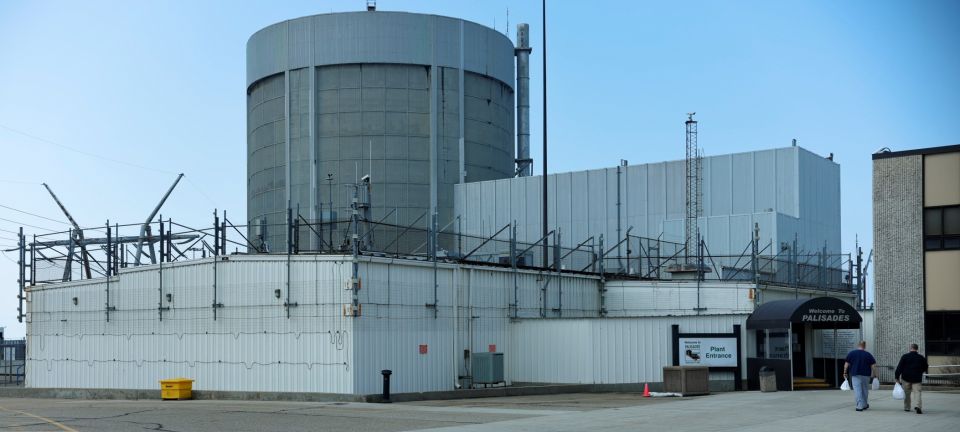RIPB regulations: Are we there yet?
The latest in the series of ANS Community of Practice (CoP) presentations on risk-informed, performance-based (RIPB) principles, held May 31, 2024, was a departure from past presentations. Rani Franovich and N. Prasad Kadambi provided their perspectives on what is missing in current dialogue on RIPB. What followed was a meaningful discussion and exchange of perspectives regarding what is meant by “performance based.”
Franovich is the principal consultant, expert witness, and owner of Nuclear Rose Consulting LLC. Previously, she spent 30 years with the U.S. Nuclear Regulatory Commission in many roles, including resident inspector at a nuclear power plant.
Kadambi also worked at the NRC for 25 years, where he licensed a nuclear power plant and prepared communications such as bulletins, generic letters, and information notices. After retiring he formed Kadambi Engineering Consultants. He is a past chair of the ANS Risk-informed, Performance-based Principles and Policy Committee (RP3C); however, he participated in this CoP as an independent consultant expressing his personal views.
In the beginning
When Franovich joined the NRC in 1991, the regulatory approach was to enforce compliance with requirements. The commission’s systematic assessment of licensee performance applied this approach, which in turn translated to high operating and maintenance costs—often without a commensurate improvement in safety. In 1994, Towers Perrin, an independent, management and consulting firm, uncovered chronic and persistent problems with the NRC’s management of the regulatory process, specifically its focus on enforcement of compliance with prescriptive, deterministic regulations.
Four years later, in July 1998, Joe Colvin, then president and chief executive officer of the Nuclear Energy Institute, testified before Congress and called for the NRC to replace its outdated regulatory framework with one that is safety focused and responsive. He also pressed for meaningful regulatory reforms. In response, Congress threatened to deeply cut the NRC’s budget unless it modernized its inspection and oversight regimes. This got the commission’s attention. NRC insiders, like Kadambi and Franovich, call this the “near-death experience.”
In 1999, the Commission directed the staff to apply the concepts in SRM-SECY-98-144, “White Paper on Risk-Informed and Performance-Based Regulation” to NRC rulemaking, licensing, inspection, assessment, enforcement, and other decision-making. In the 25 years since, said Franovich, “not much progress has been made, with one exception: in 2000 the NRC implemented a new reactor oversight process .” At the time, Franovich was a resident inspector at Catawba nuclear power plant, and she felt the palpable resistance to change. The following year brought 9/11 and reversed many efficiencies gained in the NRC's oversight of nuclear security. Congressional and commission direction to modernize was left incomplete, and licensing frameworks remained largely deterministic and prescriptive.
Franovich presented a view from the field where she was carrying out NRC’s mission. Kadambi’s perspective was from the inside. Working at NRC headquarters, he reviewed NRC reports on events related to maintenance at operating plants. His history goes back to the Maintenance Rule. Kadambi said he “feels this was the first time the NRC confronted difficult issues associated with avoiding prescription in regulation.” He added, “you can be prescriptive or performance based, and quite often the [NRC] staff’s first response to anything was to prescribe.”
Franovich observed that today, most stakeholders agree that regulatory modernization is necessary to keep pace with innovation, incentivize improved safety outcomes, and mitigate enterprise risk to the industry. But what modernization looks like may differ among stakeholders, with some arguing it’s all about risk-informing regulatory decisions and others arguing that this is only one aspect of the solution and does not address an objectives-driven focus on outcomes, that is, performance-based approaches.
What does “performance based” mean?
When the NRC issued SRM-SECY-98-144, it included attributes associated with a risk-informed approach, a performance-based approach, and a risk-informed and performance-based approach, which we now call RIPB. It is Kadambi’s belief that the NRC expected these definitions be used to answer the question, “How can we know that a performance-based approach has been implemented and implemented in a way that is consistent with the Commission's direction?” To answer that question, understanding SRM-SECY-98-144 is important. If these attributes are absent, it just means that something other than a performance-based approach was used. The approach may not be wrong in a technical sense, but applying the “performance based” label may be inappropriate.
The research and resultant documents led to a distillation of what is needed to implement a formal performance-based approach and be consistent with the Commission's direction. According to Kadambi, to do this in a practical way, observable parameters that are directly related to an outcome are needed, as are objective acceptance criteria for each of the parameters to set certain limits in the operation or safety assessment and a decision-making framework for evaluating and assessing physical and temporal margins.
This provides flexibility to the licensee, showing that margins are being employed to improve outcomes. The set of ideas come together for consideration as an alternative to the traditional prescriptive approach. In support of all that is being done in this area, the RP3C developed a guidance document, Incorporating Risk-Informed and Performance-Based Approaches/Attributes in ANS Standards, which again tries to reflect all these attributes and help those who write standards.
Regulatory modernization
Kadambi observed that regulatory modernization began at the NRC with the maintenance rule in the early 1990s. Franovich further noted that SRM-SECY-98-144 defined “RIPB with prescription” as the antithesis of an objectives-oriented, performance-based approach, and “determinism” as the antithesis of a risk-based approach.
These terms were applied to develop the new reactor oversight process (ROP) in 2000. On March 21, 2011, the NRC approved recommended improvements to the construction ROP, but NRC staff did not recommend construction performance indicators (PIs), because no performance data existed at the time. As such, inspection findings were the only input to the construction performance assessment process.
On April 21, 2016, Victor McCree, the NRC executive director for operations, testified before Congress. The topic was again regulatory reform modernization, increased transparency, and accountability of NRC. McCree assured Congress of his commitment to efficiency and readiness by 2019 to review applications for advanced non–light water reactors under a new licensing framework being developed by NRC staff. Meanwhile, the industry developed the licensing modernization project (LMP) for use under Part 50 to license advanced reactors.
In 2019, Congress passed the Nuclear Energy Innovation and Modernization Act (NEIMA), which defined what is meant by modernization and mandated that the NRC complete the work it began in the late 1990s and deliver the promised licensing framework. Specifically, NEIMA directed the NRC to develop a technology-inclusive licensing framework for new and advanced reactors that applies RIPB principles. In response, the NRC developed proposed language for a new regulation under Part 53. The proposed rule borrowed heavily from existing regulations for large light water reactors and was deemed by the industry neither useful nor usable.
The conversation continues
The May CoP offered an engaging discussion and exchange of perspectives. For the full experience, visit the RP3C’s web page to watch a recording of the presentation. (The presentation is also available at youtube.com/watch?v=Be5Af-qmnhY.)
RP3C is a special committee created by the ANS Standards Board to provide guidance to ANS standards committees on the use of RIPB methods. The CoP is part of RP3C’s charter, which includes training and knowledge-sharing of RIPB principles. Individuals interested in becoming a member of RP3C or joining one of the monthly CoP presentations should contact standards@ans.org. We encourage you to visit the committee page at ans.org, where slides and recordings of previous CoPs are available.






